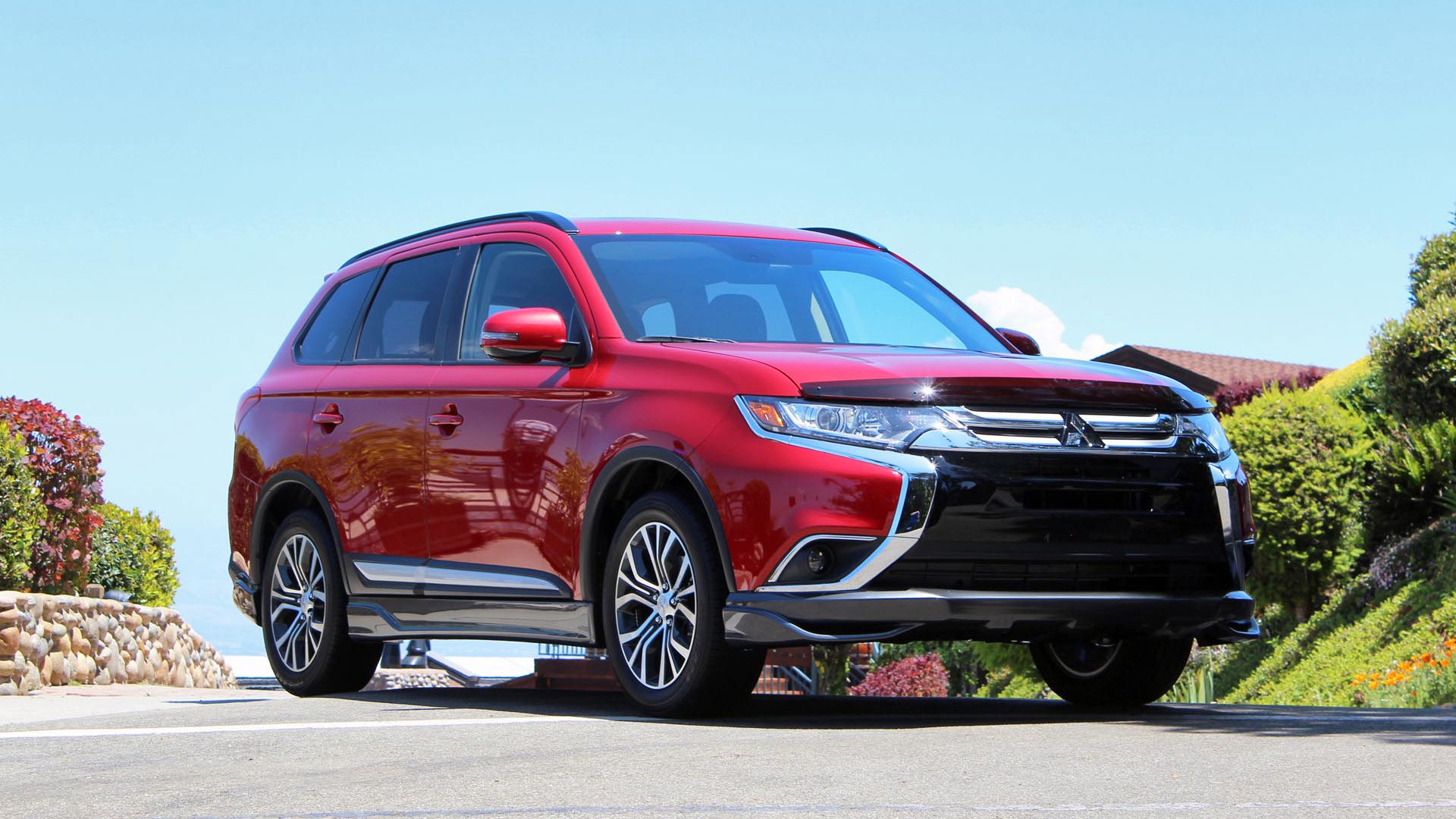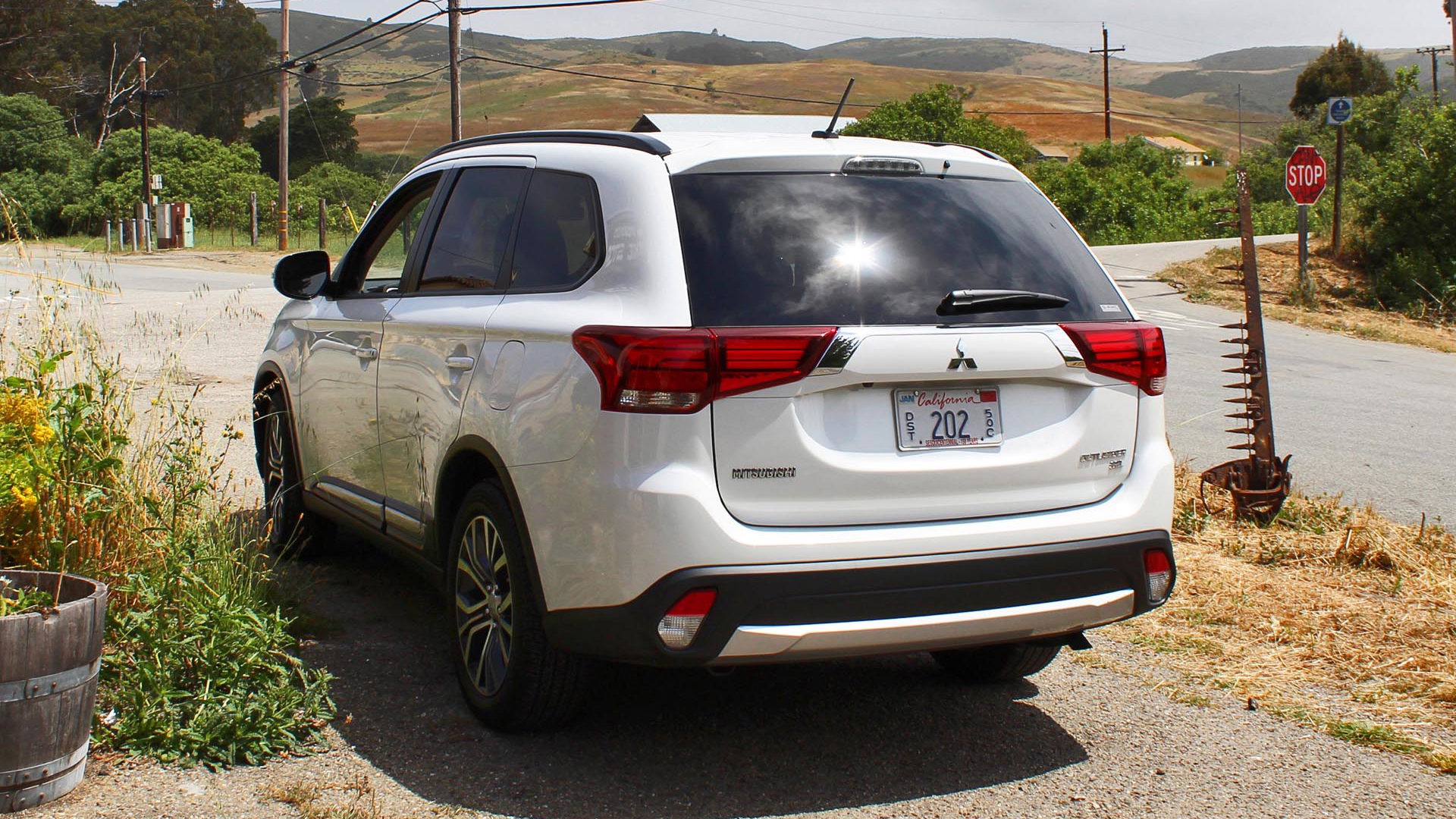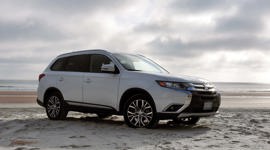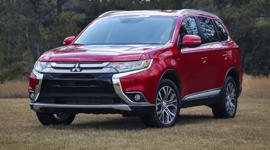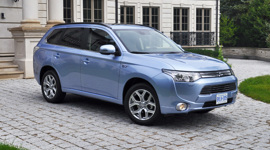Since its redesign in 2014, the Mitsubishi Outlander could have easily been dubbed the Outsider, such was its lukewarm reception in this highly competitive compact SUV segment. There was nothing particularly wrong with the Outlander, but neither did it stand out in any way. And the styling… well, it looked kinda' like a rolling thumb.
While Canadian sales of the Outlander tallied 5,330 in 2014, this number pales against the Ford Escape juggernaut of 52,198 units. Not to mention the Honda CR-V (37,684) and Toyota RAV4 (36,693).
Mitsubishi has gone over this SUV with a fine-tooth comb, focusing mostly on NVH, ride quality, improved handling and perceived quality. And it shows.
Indeed, there are plenty of impressive players duking it out for your SUV dollars. See our recent Compact SUV comparo for a ringside seat.
So how would the Mitsubishi Outlander have fared in this punch-up?
The 2015 model, not so well. However, after driving the significantly revised 2016 model at its press launch in San Francisco, I’m inclined to think it would have held its own, and possibly landed a couple of punches in the process.
Other than its bolder “Dynamic Shield” visage (now with standard LED accent lights) there are not any real big OMG! changes to the 2016 Outlander. But lots of little ones. Mitsubishi has gone over this SUV with a fine-tooth comb, focusing mostly on NVH, ride quality, improved handling and perceived quality. And it shows.
Mitsubishi brought a few 2015 models along so we could drive them back to back with the 2016. Smart move.
Criticisms of the 2014-15 Outlander centred on its woolly body control, too much road and tire noise, and cabin quality that wasn’t up to scratch. Hopping into the 2016 after driving last year’s model proves it to be markedly quieter with a more refined ride and sharper handling. It isn’t as alert on these back roads as a Honda CR-V or Mazda CX-5, but it shows a pleasantly compliant and quiet ride that puts it with the segment leaders in this regard – the Nissan Rogue being one.
Mitsubishi did a lot of work below decks. Spring rates and shock absorber damping was revised along with the implementation of chassis reinforcements. Dynamic damping was added to the AWD system and body rigidity is enhanced with additional bracing.
Sound deadening was added to the front wheel wells, door panels, floor and door jambs, and the glass benefits from better acoustic insulating properties.
They even worked on the sound of the doors. It might seem like a small thing but it ain’t. There’s nothing more damaging to the perceived quality of a vehicle than a tinny thwang when lifting the door handle or a hollow clang when closing.
From which the 2015 suffered, and this 2016 doesn’t.
The cabin doesn’t look a whole lot different but there are a number of meaningful improvements, starting with an all new steering wheel trimmed in quality leather that is much nicer to the touch. The centre armrest has thicker padding and the A-pillars and headliner are now finished in a classy pale weave. Modern looking trim panels replace the old faux wood.
The clear back-lit gauges and intuitive HVAC controls were never an issue.
We appreciated the comfy leather seats in these testers. Cloth chairs get new fabric for 2016, and front seat heaters and wiper de-icers are now standard across the line in Canada.
Another improvement pertains to the touchscreen infotainment head unit that now has hard buttons flanking the screen and a pair of rotary knobs, making its operation considerably easier and safer. The graphics are improved as well.
Carrying over are the 3.0L V6 mated to a six-speed auto and the 2.4L four cylinder with CVT. The V6’s power drops slightly from 227 hp to 224 hp due to a catalyst change. It makes 215 lb-ft of torque. The 166-hp, 162 lb-ft four-pot benefits from a revised CVT, dubbed CVT8 that claims better response and less internal friction for a marginal improvement in fuel economy.
The AWC all-wheel-drive system has three modes. Eco runs primarily in front drive until front slippage is detected. Auto apportions some torque to the rear wheels even in the dry for better handling. Lock provides maximum traction.
The 2016 Mitsubishi Outlander starts at $25,998 for the ES FWD model. For this we get 16-inch alloys, LED DRLs and taillights, heated seats, CVT, wiper de-icers and the 2.4L four. Adding AWC (all-wheel drive) costs $2,000. The top four-cylinder ES AWC Premium at $32,998 gets 18-inch alloys, leather, auto-dimming interior mirror with Homelink, power folding mirrors, silver roof rails, proximity key and gloss black accent panel.
The four-cylinder models we drove on this event were top-trim US spec, and down here you can kit your four-pot Outlander out with all the premium goodies that, up in Canada, are only available on the upper V6 models. And they would be powered lift gate, navigation, rain sensing wipers, S-AWC (adds torque vectoring to the front wheels) and a suit of radar based safety systems – adaptive cruise, forward collision mitigation and lane departure warning.
Which may help explain why the take rate for the V6 Outlander in Canada runs 70 percent, while it’s only 15 percent in the US. Americans buy more four-cylinder variants than Canadians? Now there’s a switch.
Moving on to the Canadian V6 models, they start with the $31,198 SE AWC, and with a couple of trim levels in between, conclude at $38,498 for the GT S-AWC Navi that gets all the stuff plus new-for-2016 LED headlamps. Not on the menu is blind spot detection, heated steering wheel or heated rear seats.
The V6-powered Outlanders are tow rated for 3,500 lb and are available with third row seating, making them the only Japanese compact SUV on the market to do so. You can’t get the third row in the four-banger.
Access has been improved thanks to new second row seat design with simpler sliding and folding functions. Additionally, folding the second row flat no longer requires head rest removal, and the load floor is completely flat.
The third row perches are definitely of the “occasional use” variety, but hey, they’re there and functional in a pinch.
For 2016, the Outlander’s hatch lifts 3.8mm higher so you’re less likely to bonk your noggin.
We drove the four-cylinder Outlanders first and found them perfectly agreeable, save for the expected CVT-induced droning when matting the go pedal, which you’ll be doing a lot when looking for some giddy-up. This SOHC engine without direct injection is hardly state of the art and is down on power when compared to the competition. Still, when just tooling about, cruising the back roads or highway touring it does just fine.
Fuel economy for the front drive ES is pegged at 9.5 L/100 km city and 7.5 highway. With four wheel drive, the ES gets 9.9 city and 8.1 highway. The V6 models (all equipped with AWC) are rated at 11.5 city and 8.4 highway.
The V6 models with their traditional 6-speed autos move out with more authority, although torque is soft on the bottom end and you’d never mistake this somewhat coarse V6 for one from Honda or Toyota. But get it above 3500 rpm and six-pot Outlander hauls quite well. Love the big metal shift paddles that operate with firm precision and call up shifts with decent alacrity. A little taste of Mitsu’s rallying DNA.
The 2016 Mitsubishi Outlander will be available all across Canada in August. The challenge for Mitsubishi will be to get folks in the showrooms, as this brand is well off the radar of most shoppers. But for a few, the improved 2016 with available V6, third row seat and bragging a 10 year warranty could be just the ticket.
Pricing: 2016 Mitsubishi Outlander
ES FWD: $25,998
ES AWC: $27,998
ES AWC: Premium $31,998
SE AWC: $31,198
SE AWC Touring: $32,798
GT S-AWC: $36,498
GT S-AWC NAVI: $38,498


